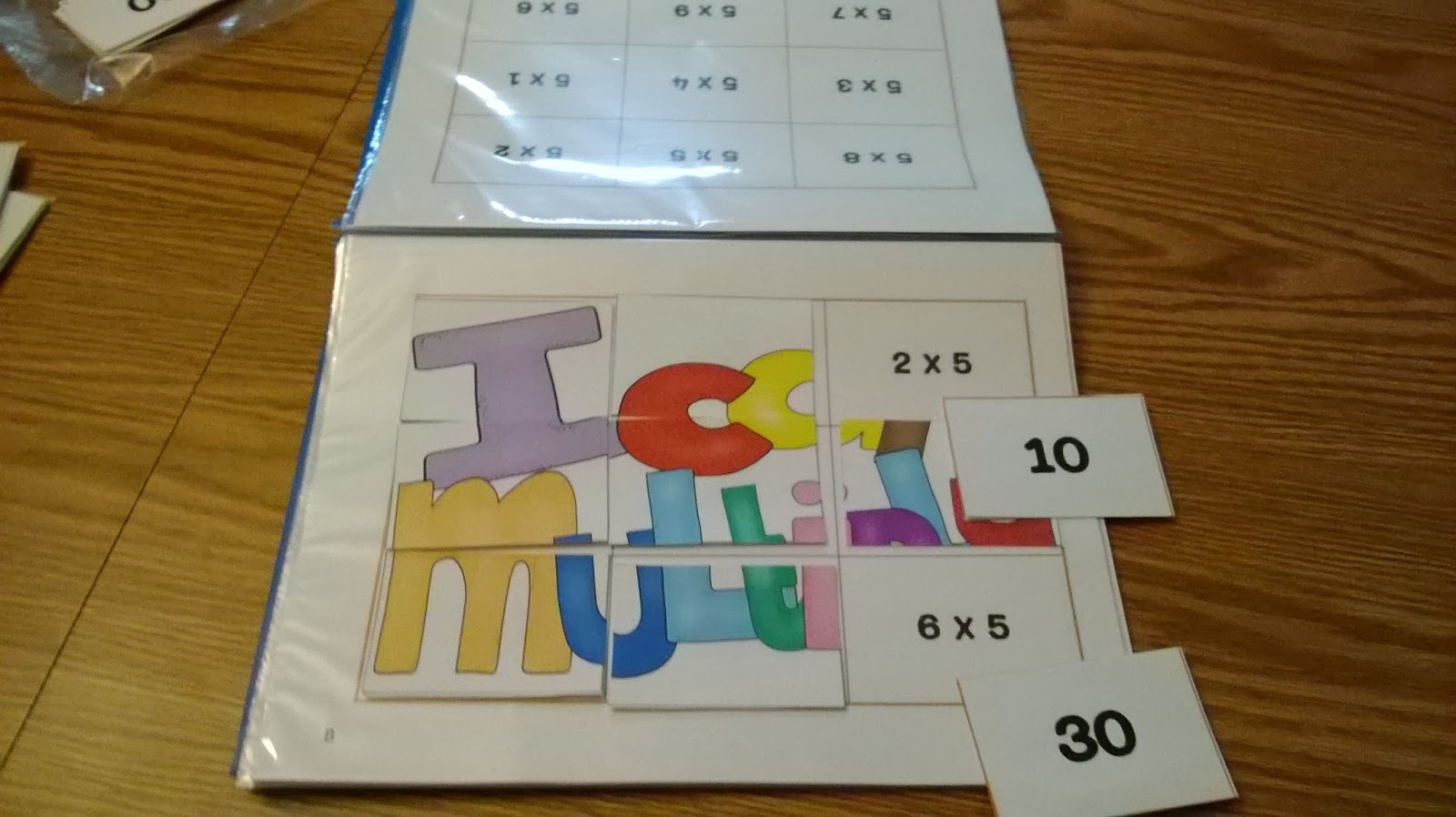So, how do I remedy this situation? The answer is games. About 80-90% of my students are math students, and most of them are working on multiplication facts at any given time of the year. So I created these fun, interactive flash cards that kids actually WANT to practice. I typically use these as an icebreaker, or warm-up activity when I first arrive. Recently I've been making smaller sets and leaving them with my students to practice in between sessions.
Here's what my folder looks like:
I've designed 3 boards for each set of flashcards, and in this particular set I've included facts for times 2, 5, and 10. I have students at various levels, so I designed two sets of boards, one for facts through 9 and the other for facts through 16. I also made each set follow the same pattern, so each puzzle can be printed as backs for each set, giving me about 18 different combinations. Now my students aren't just memorizing each puzzle, they actually have to learn the facts!
If you think your students might like these puzzles, or you want to add them to your bag of goodies to beat the Monday Madness, head over to my store on Teacherspayteachers.com!
What do you do to beat the Monday Madness? Sound off in the comments and I'll award a free copy of this activity to the most creative solution!















